Opinions
The intergenerational impact of aging with HIV
Dec. 1 is World AIDS Day
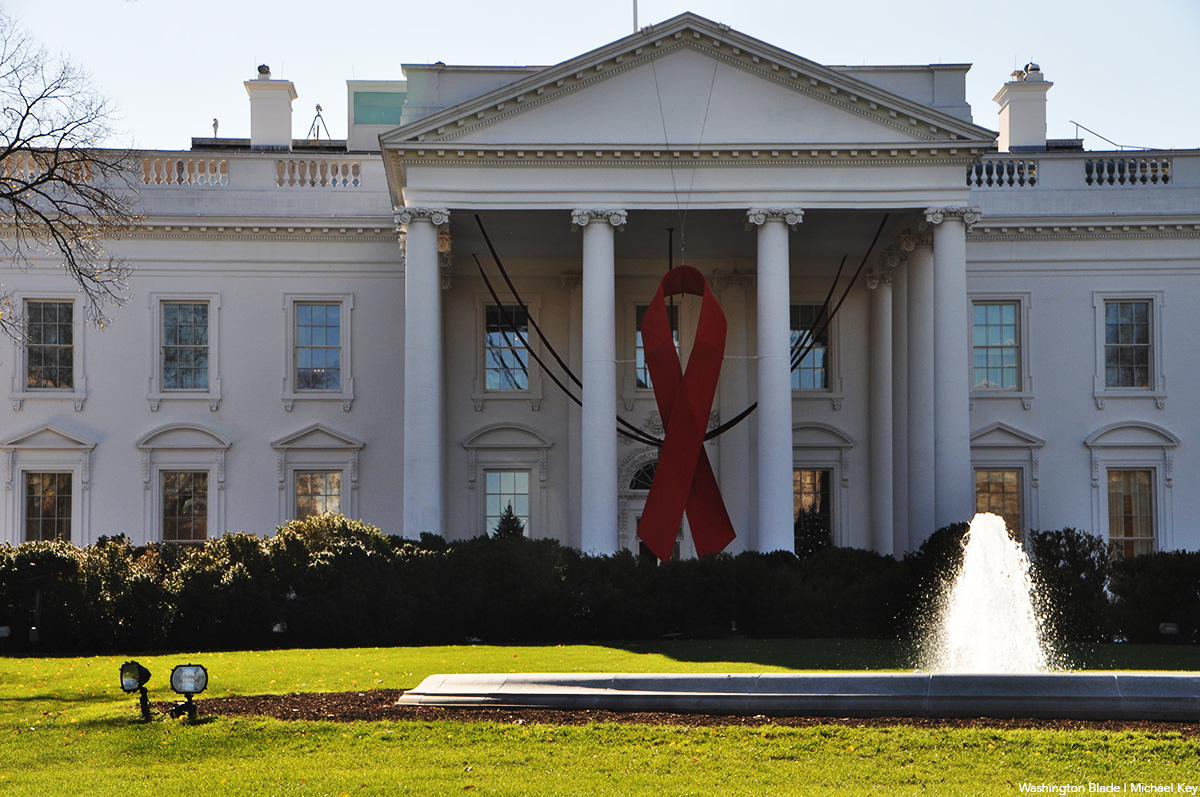
BY TERRI L. WILDER | Today, Dec. 1, 2024, the global HIV community marks the 37th annual World AIDS Day (WAD). Here in the U.S., the face of HIV looks quite different than it did on the first WAD in 1988. It is estimated that more than 50 percent of people living with HIV (PLHIV) in the U.S. are aged 50 and older — an age that must have seemed impossible to the countless young people diagnosed during the height of the epidemic. Some were diagnosed later in life, whereas others have lived with HIV for many years — in some cases, since birth.
While their stories differ, PLHIV all face a common challenge: facing the impact of aging with HIV. The theme of WAD 2024 is “Collective action: Sustain and accelerate HIV progress.” A key to this progress is uplifting and understanding the real stories and lived realities of those growing older with HIV and using their experiences to guide proactive policy.
The spread of misinformation
In 1981, the first cases of what would later be identified as HIV (human immunodeficiency virus, the cause of AIDS) were reported. Three years later, Nathan Townsend was diagnosed with HIV at age 30.
When he got the call with the news, he was shocked. Early reports of HIV often suggested that only specific communities — most notably white gay men — were vulnerable to HIV. However, widespread misinformation contributed to the Black community later accounting for nearly half of all AIDS-related deaths, according to a 1999 CDC report.
Then, Nathan received more grim news: He was told by his doctors he only had two years to live. Believing he was going to die, Nathan purchased a casket and paid for his future funeral — one that thankfully didn’t come.
Today, Nathan is one of the growing number of older people who live with HIV, with researchers estimating that 70 percent of those living with the virus will be 50 and older by 2030.
The stigma of HIV diagnosis
As awareness of HIV grew in the late 1980s, many Americans expressed stigmatizing attitudes. A 1985 Gallup poll found that 28 percent of Americans reported that they or someone they knew had avoided places where gay men might be present because of HIV; by 1986, the percentage had grown to 44 percent.
This was the beginning of the endless stigma faced by those living with HIV — something Porchia Dees and Grissel Granados experienced.
Porchia was diagnosed at two months old through perinatal transmission and is part of the first generation of children born with HIV. Doctors indicated that Porchia wouldn’t live to see her fifth birthday. Fortunately, Porchia would prove them wrong.
Porchia still remembers the stigma she felt when she learned of her diagnosis in sixth grade from a social worker at the Children’s Hospital in Los Angeles. She recalled being pulled aside and asked if she was sexually active before being explicitly warned against having any sexual activity. The next time she heard about HIV was in a sex education class, which furthered the stigmatizing message that she would never live a “normal” life.
Today, Porchia is an advocate, changing people’s perspectives on what it means to live with HIV, but it does not come without challenges. At 38-years-old, Porchia is more focused on her health after witnessing long-term HIV survivors battle kidney failure, renal failure, bone density issues, cognitive issues, breast cancer, and shortened lifespans.
Grissel, another lifetime HIV survivor who acquired HIV through perinatal transmission, considers herself lucky that her mother explained the diagnosis to her at a young age. Despite her family’s support and honesty about HIV, a now 38-year-old Grissel still had to grow up with fear and uncertainty while now facing the fear of early mortality.
Social isolation
When Rev. Claude Bowen was 33 years old, he received a phone call that would change his life: His HIV test came back positive.
Believing he only had two years to live, he hid himself away, self-medicating and isolating himself from his support systems. These coping mechanisms served as an escape from his reality. But eventually, he realized that this was his reality and wanted to fight. He started getting involved in HIV education and advocacy work after his best friend disappeared in the late 80s. He would soon get a phone call, learning his friend had died of complications related to HIV.
For the LGBTQ+ community, losing friends and chosen family during this time became all too common. From 1984-1986, over 42,500 people in the U.S. died from HIV-related causes, which doesn’t account for individuals who died from complications related to HIV whose families or loved ones asked that the cause of death not be disclosed. For older PLHIV, this devastating loss of community has contributed to social isolation and loneliness.
Living and aging with HIV
With access to care, HIV is no longer a death sentence, thanks to scientific advancements in medications and treatments. Whether in your 70s like Nathan or 38 like Portia, many health challenges now faced by people living with HIV are more related to aging than to HIV-related illnesses.
Aging with HIV comes with a greater risk of health problems from inflammation from the virus and the long-term use of HIV medications. Many people aging with HIV also face the “dual stigma” of ageism and HIV-related stigma, leading to high rates of anxiety, depression, and substance use disorders. Furthermore, many have lost friends and family to the HIV epidemic, leading to loneliness and increased risks of cognitive decline and other medical conditions in older adults, as found in a 2023 study from Frontiers in Aging Neuroscience.
Acknowledging the challenges that people aging with HIV face helps ensure they get the necessary support to live a fulfilling and thriving life.
Taking action
The Older Americans Act (OAA) funds aging services and supports for older people across the country to age-in-place. In 2024, the federal Administration for Community Living (ACL) issued new regulations ensuring that LGBTQ+ older people and older people living with HIV could have more equitable access to the programs funded under the OAA. Yet, there is still more work that could be done to ensure equitable access for those living with HIV. Congress is currently in the process of reauthorizing the law.
While we face a challenging time in modern politics, we must urge our legislators to do whatever they can to ensure that the OAA and similar laws support PLHIV. And all of us must work with our state and area agencies on aging to robustly implement the latest OAA regulations, to ensure that all older people, including LGBTQ+ older people and those living with HIV, get the services and supports they need to remain independent.
States can also do more to protect people living with HIV by passing state-level LGBTQ+ and HIV Long-term Care Bills of Rights, as advocated for by activists and organizations, including SAGE, the world’s oldest and largest advocacy organization dedicated to improving the lives of LGBTQ+ elders. These laws ensure that LGBTQ+ older people and those aging with HIV receive equitable treatment in long-term care facilities. For instance, one long-term survivor, 82, who asked to remain anonymous for this piece, credits his doctor for his excellent treatment and care, saying, “It is tremendous to have someone in your corner that you can talk to openly and ask questions” without fear of judgment.
Finally, we must advance policies that address the needs of all those living with HIV and AIDS, no matter their ages.
The time is now
The impact of living with HIV is different for every generation. From lifetime survivors like Porchia and Grissel to those aging with HIV like Claude and Nathan, access to community support, services, and HIV-specific healthcare is essential for quality of life across generations.
This WAD, HIV advocates, aging organizations, and stakeholders must stand with local legislators to ensure care, protection, and support for all PLHIV.
Terri L. Wilder (She/Her), MSW, is the HIV/Aging policy advocate at SAGE, the world’s oldest and largest advocacy organization dedicated to improving the lives of LGBTQ+ elders. In her role, she implements SAGE’s federal and state HIV/aging policy priorities.
Terri has worked in HIV care since 1989, providing social services, directing education programs for clients and medical providers, and advocating for policy change. She is an experienced public speaker who has presented at conferences worldwide on various HIV topics. Terri is also an award-winning writer who has published on multiple HIV-related topics through The Body’s website, among others. Terri served on the New York Governor’s Task Force to End AIDS (EtE) and the New York Governor’s Hepatitis C Elimination Taskforce, where she contributed to the development of state plans to end the HIV epidemic and eliminate Hepatitis C.
She is a member of the New York State Department of Health AIDS Advisory Council EtE Subcommittee, and the Minnesota Council for HIV/AIDS Care and Prevention (MCHACP). Terri has been recognized for her work through the POZ 100: Celebrating Women edition of POZ magazine (2017), as well as awards from the NYS DOH AIDS Institute, AIDS Survival Project, and Bridging Access to Care, Inc.
Commentary
A conversation about queers and class
As a barback, I see our community’s elitism up close
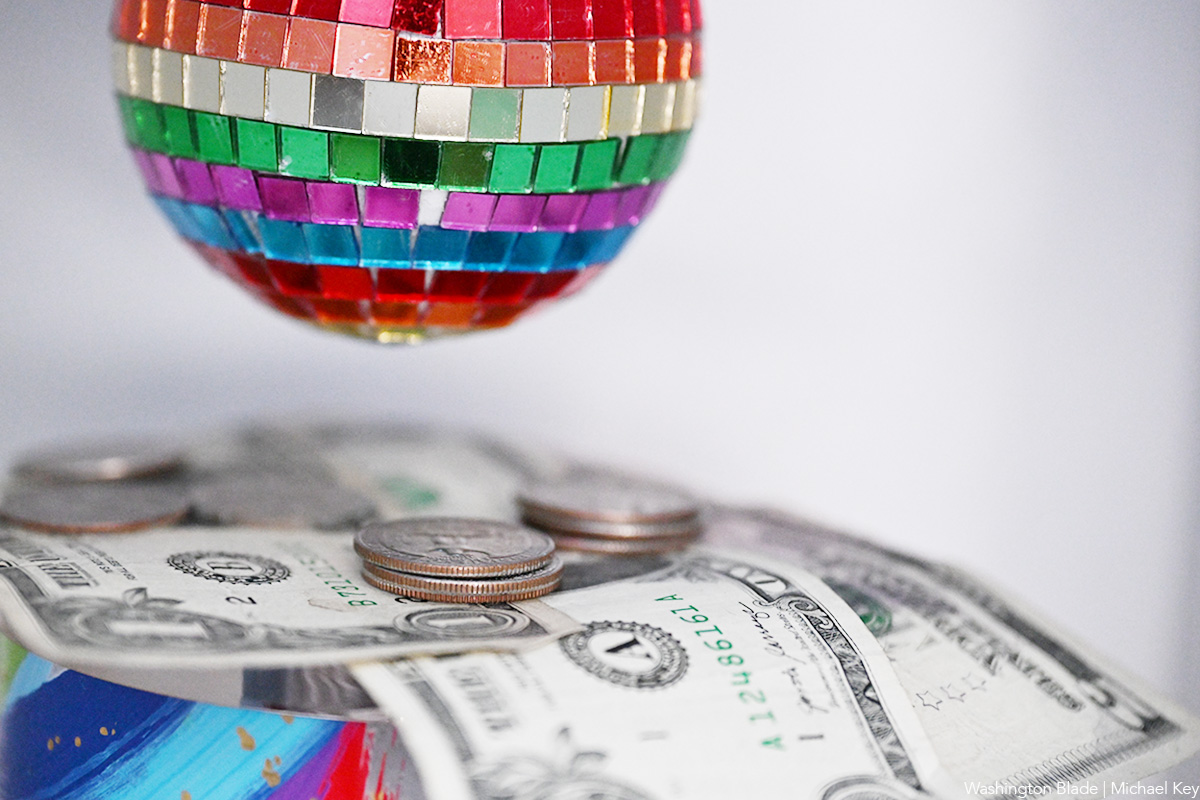
In the bar, on the way to its now-Instafamous bathrooms, there’s a sign that reads, “queer & trans liberation means economic justice for all.”
I remember seeing that sign the first week the bar opened, and ever since I often find myself reflecting on that message. I stand fully in agreement. That’s why laws protecting queers in the workplace are essential, for far too often we are targeted otherwise. It’s also why I love working at the bar, since it provides opportunities for queers from all over the spectrum to earn a living. At a time when I gave myself space to pursue art, it was the bar that enabled me to do so.
It’s one thing to support the LGBTQ community in spirit, but that spirit means jack in a capitalist society if viable economic opportunities don’t exist. Speaking of jack, there’s a fellow barback named Jack who I fangirl over often. Jack is a decade younger than me, but damn I wish I had his sex appeal at his age (or any age, for that matter). He also has a mustache that easily puts mine to shame.
Jack not only agrees but took things one step further. “Economic inequality IS a queer issue,” he told me, “especially as we move into the most uncertain period of American politics I have ever lived through, it is apparent our identity is now a fireable offense.”
Uncertain is right. We’re fresh off the heels of a trade bonanza, one caused for literally no reason by our current commander in chief. Yet there emerged a strange division when discussing the trade war’s “unintended” consequences. For working class comrades like Jack and myself, we’re stressed about increasing prices in an already tough economy. But the wealthier echelons of our country had something else on their mind: the spiraling stock market. This alone highlights the story of our economic divide, where the same event produces two separate concerns for two distinct classes.
This is not to say the stock market is not important, but sometimes the media forget many Americans don’t own stock at all, including a vast majority of people between 18 and 29. In fact, according to Axios, the wealthiest 10 percent of Americans own 93 percent of the entire stock market, with the richest 1 percent holding $25 trillion — that’s right, trillion with a “t” — in market value. So, when the president reversed course on trade, it was less about high prices hurting everyday Americans and more about the dent created in the wealth of the wealthiest. And I’ll admit: that bothers me a lot.
If there is any takeaway from Trump’s trade war, it should be this: Economic inequality is the highest it has been in decades and, if left unchecked, will destroy the fabric of our country. We are steadily moving toward oligarchy status—if we’re not there already, that is—and it seems to grow worse with each passing year and administration. But in a city of D.C. gays who often skew corporate, I wonder: Are we all on the same page here?
After becoming a barback, I have my doubts. From questions about what else I do, to comments encouraging me to work hard so that I can be a bartender one day, I quickly learned the gay world is not too fond of barbacking. Barebacking, sure, but not barbacking. And hey, I get it—we’re not the alcohol hookup at the bar. Still, we are part of the service industry, and while some people are incredibly kind, you’d be surprised at how many turn up their noses at us, too.
Recently, I’ve come to realize my class defines me as much as my orientation does, if not more. Naturally, when you come from a rough neck of the woods like I do, it’s easy to feel out of place in a flashy city like D.C., which Jack noticed, too. “Anyone from a working class background could testify to that,” he said. “I don’t really know anyone from true upper class backgrounds, but I’d imagine their experience is one that leans into assimilation.”
Assimilation is a key word here, for admittedly gays love to play with the elite. Often, we don’t have children, meaning more money for the finer things in life, but that also means we may not think about future generations much, either. I’ve written before that our insecurity growing up has us ready to show the world just how powerful gays can be—power that comes in trips to Coachella and Puerto Vallarta, or basking in the lavish houses and toys we own. There’s already a joke that gays run the government, and corporate gays kick ass at their jobs as well. So, given the choice between fighting inequality and keeping a high-paying job, I must admit I have a hard time seeing where D.C. gays stand.
Admittedly, it worked out in our favor before, given that many corporations catered to our economic prowess over the years. But look at what’s happening now: Many corporations have kicked us to the curb. Protections are being stripped from queers, particularly for our trans brothers and sisters. Law firms are bowing down to Trump, offering hundreds of millions in legal fees just for their bottom line. All of this will hurt both queers and the working class in the long run, so again I ask: Corporate gays, where do you stand? Because if you remain complicit, that’s bad news for us all.
I don’t want to sound accusatory, and I hate being a doomsday type, so allow me to end this on a better note. Strength is not about celebrating when times are good. Arguably, true strength emerges when times get tough. These are tough times, my friends, but that also makes now the perfect opportunity to show the world just how strong we are.
At a time when the world is pressuring us to turn our backs on each other, we must defy them to show up when it counts. Corporate gays—now more than ever, at a time when the economy is turning its back on queers, we need you. We need you to stand up for the queer community. We need you to make sure no one gets left behind. We need you to show up for us, so that we can show up for you, too.
Ten years ago, the economy didn’t turn queer out of nowhere. The economy turned queer because we made it turn queer.
And if we did it once, surely we can do it again.
Jake Stewart is a D.C.-based writer and barback.
Opinions
On Pope Francis, Opus Dei and ongoing religious intolerance
Argentine-born pontiff died on Monday

“Good Friday” set the stage for Saturday’s anti-Trump/MAGA “Hands Off” protests serving as a timely lead-in to binge-watching Alex Gibney’s two-part HBO political documentary, “The Dark Money Game” on Easter Sunday. In “Wealth of the Wicked,” nefarious Opus Dei —Svengali Leonard Leo strategically seduces politically disappointed Catholic Federalist Society billionaires into subsidizing a scheme to ‘pipeline’ malleable conservative judges to take over the Supreme Court and overturn reproductive rights.
A key victory for “Operation Higher Court” came in 2010 when SCOTUS ruled 5-4 in Citizens United v Federal Election Commission, that corporations and unions have the same First Amendment free political speech rights as individuals — as long as their unlimited cash donations go to 501 c(4)’s or Super PAC slush funds and not directly to candidates. Twelve years later, in 2022, they got their payoff with the overturning of Roe v Wade by Leo-promoted Catholic justices.
But Leo’s political conniving is not the only exploitation of moral corruption. The documentary exposes conservative Christians too.
Gibney’s anti-hero is a former rabid anti-abortion lobbyist named Rev. Robert Schenck. He tells of turning to a fellow conservative in Cleveland, Ohio after Trump won the Republican presidential nomination in 2016 and asking: “Are we really going to do this? We’re going to choose this man who’s inimical to everything we believe?” The other evangelical replied: “I don’t care how bad he is. He’s going to get us the court we need.’”
Schenck explains the unholy alliance between Christian conservatives and Big Business. “Whenever you talked about government regulation, the argument was eventually — ‘these same characters who control my business are going to start trying to control your church. So, it’s in your best interests that we defang this monster’ — and that brought a lot of religious conservatives over.”
And there’s this: “We have a little aphorism built on a Bible verse: ‘The wealth of the wicked is laid up for the righteous.’ So, yeah, let’s baptize the billionaires’ money. We can do that — and it eventually brought together this alliance.”
Schenck later reveals an intense epiphany that resulted in regret for how much harm he caused. Not so for Leo.
This is an excerpt from Gareth Gore’s comprehensive book Opus, for Rolling Stone Magazine:
“DURING THE DONALD TRUMP YEARS, conservatives — led by Leonard Leo — took control of the Supreme Court … At one Federalist Society event, his good friend Supreme Court Justice Clarence Thomas jokingly referred to Leo as the third most powerful man in the world, presumably behind the pope and the president of the United States.”
On Monday morning, Pope Francis died. I liked this pope, compared to the others. I covered Creating Change during the AIDS crisis when author Paul Monette delivered his brilliant, scathing denouncement of the Catholic Church, then unexpectedly ripped up a portrait of Pope John Paul II. Pope Benedict XVI was just crotchety cruel. But Pope Francis — named for St. Francis of Assisi — had that big smile and genuinely seemed to care about migrants, the vulnerable and the marginalized — like us. He even used the word ‘gay’ instead of ‘homosexual.’
Pope Francis’s reply to a question about a Vatican “gay lobby” on a flight from Rio de Janeiro to Rome made global news. “If a person is gay and seeks God and has good will,” he said in 2013. “Who am I to judge? We shouldn’t marginalize people for this. They must be integrated into society.”
What did this mean? Welcoming inclusion into a family that officially considers us ‘intrinsically disordered?’
And then there was Pope Francis’s interaction with Juan Carlos Cruz — a whistleblower in Chile’s clerical sex abuse scandal.
“He said, ‘Look Juan Carlos, the pope loves you this way. God made you like this and he loves you,'” Cruz told The Associated Press.
Meanwhile the Catholic Church Catechism affirmed, “this inclination, which is objectively disordered, constitutes for most of them a trial.”
Ergo, a behavioral choice.
Therein lies the problem.
LGBTQ people are seen largely as individuals with sinful same sex sexual ‘inclinations.’ So when the pontiff touted ‘the equal dignity of every human being,’ and rebuked Vice President JD Vance with the ‘Good Samaritan’ parable, whereby love “builds a fraternity open to all, without exception” — we are still the exception.
Francis was all also human — having to apologize at one point for using a gay slur. But what of the bigger things like, did he know about the Opus Dei takeover of the U.S. Supreme Court when he chastised Vance about deporting migrants? Did he know that the Archdiocese of Los Angeles agreed to pay $880 million to 1,353 people last October, who allege they were victims of clergy sexual abuse? With a previous payment of $740 million, the total settlement payout will be more than $1.5 billion dollars. Is Leo chipping in to replenish that?
And it’s not over. Earlier this month, Downey Catholic priest Jaime Arriaga, 41, was charged with several counts of child sexual abuse which allegedly happened when he was serving as a transitional deacon at the Our Lady of Perpetual Help Church.
Longtime U.K LGBTQ+ activist Peter Tatchell — who’s campaigned against Catholic homophobia for 58 years — says Pope Francis’ legacy is complicated.
“I extend my condolences to Catholics worldwide on the passing of Pope Francis. While we often disagreed on issues of LGBTQ rights, I acknowledge his more compassionate tone towards sexual minorities. His recent moves to allow blessings for same-sex couples, albeit with limitations, signaled a small but significant shift in Church doctrine,” Tatchell said in a statement.
“However, for millions of LGBT+ people globally, the Catholic Church remains a force for discrimination and suffering. Under his leadership, the Vatican continued to oppose same-sex marriage and trans rights. Catholic bishops lobbied against the decriminalization of homosexuality in many parts of the world. The Vatican still upholds the homophobic edicts of the Catechism, which denounces the sexual expression of same-sex love as a ‘grave depravity’ and ‘intrinsically disordered.’ Francis’s legacy is, therefore, a mixed one — offering some progress, but leaving deep-rooted inequalities largely intact.
“The struggle for LGBT+ equality against a homophobic church must continue. We urge the next Pope to go further — to end the church’s support for discrimination, both within the faith and in the wider society.”
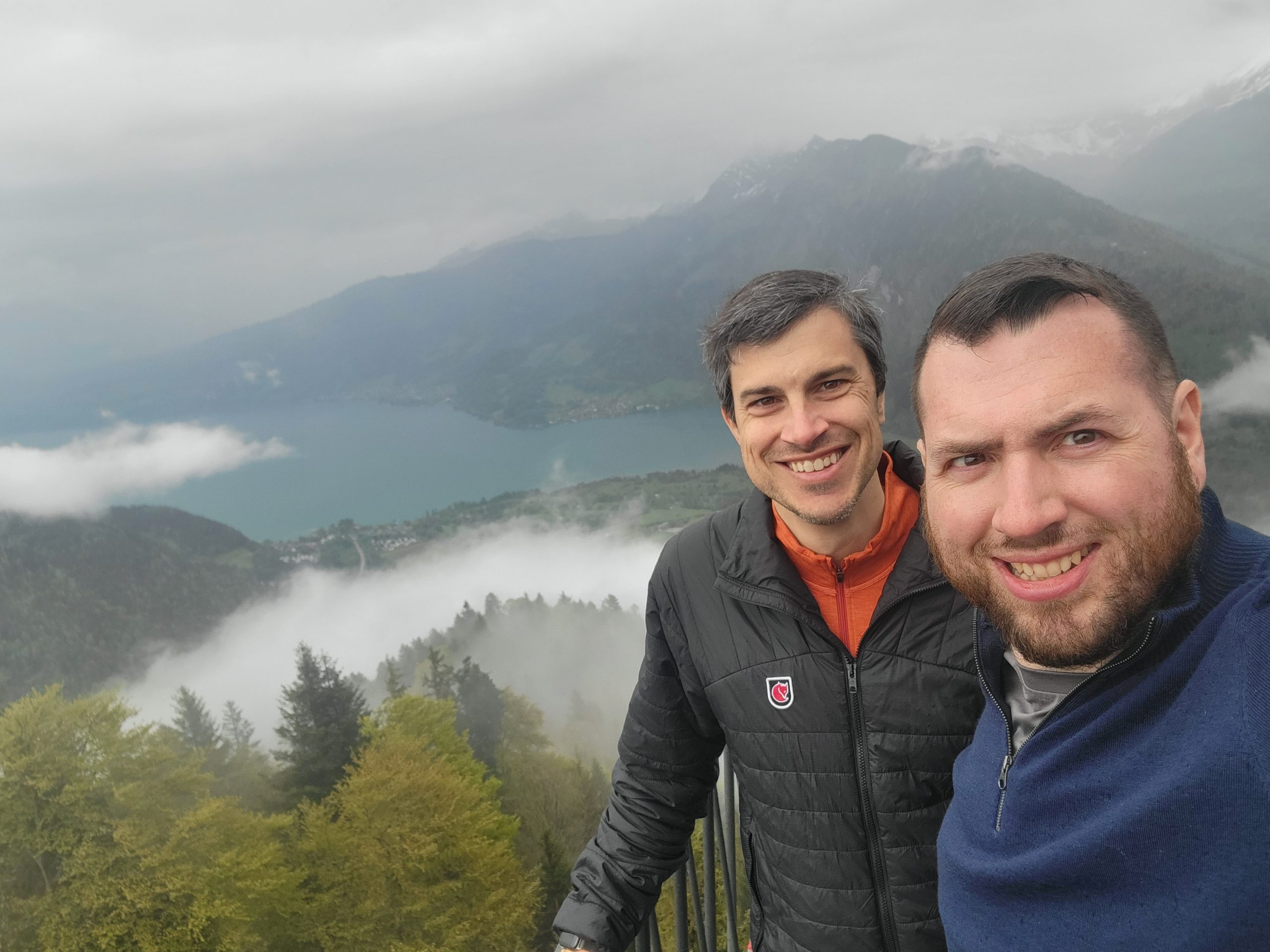
Brad Tennis loves running. For years, the meditative rhythm of his feet on pavement brought him peace like nothing else could. And it turns out, he was quite good at running as he even qualified for the Boston Marathon. But while Brad was chasing his goals, unbeknownst to him, his heart was slowly deteriorating.
In November 2018, out of the blue, Brad was diagnosed with arrhythmogenic right ventricular cardiomyopathy or ARVC, a rare heart condition that causes the heart muscle to break down over time. ARVC increases the risk of abnormal heartbeats and chance of sudden cardiac death. Brad was fitted with an internal defibrillator and told he could no longer run. Doctors warned him that endurance exercise would only accelerate the disease.
After processing the news of this condition, Brad felt like himself for a while. But in 2020, he started experiencing Implantable Cardioverter-Defibrillator (ICD) shocks to halt life threatening arrhythmias. Despite numerous surgical and medical interventions, the shocks began to get more frequent. By 2023, the toll of the disease, the ICD shocks and the treatments led to progressing heart failure. By the end of 2023, he was feeling breathless on stairs, having trouble playing physically with his children and finding it difficult to keep up at work. His world was shrinking.
In February 2024, Brad started the process with Johns Hopkins Hospital to be listed for a heart transplant. A couple of weeks later, he had another shock, more testing and then a doctor put him on ECMO (extracorporeal membrane oxygenation), a life support machine that is used when a person’s heart is failing. Soon after, he got the news of a lifetime: “There’s a heart available and today is the day!”
The organ transplant marked the beginning of a new journey. Brad focused on recovery — building up his strength, learning his new body and adjusting to life with a new heart. Last summer, he was cleared to exercise again and is enjoying playing with his kids — something he deeply missed.

“I would never say I’m back to feeling normal. I’m always going to have to carefully manage my stress and my activities to protect my health and my new heart,” said Brad. “But the transplant was lifesaving and means that I will be there to build a life with my husband and my kids.”
Brad is still moving forward. He and his family are enjoying life again — and he’s even bought a new pair of sneakers with the hope that he’ll be able to return to running regularly.
“Organ donation and transplant have reopened doors that I had thought were closed forever,” Brad shares. “It’s given me the chance to be present and have a full, happy life with my husband, son and daughter.”
His husband, Drew, adds, “Every day, I’m reminded of Brad’s strength, resilience and bravery.”
Brad doesn’t take this lifesaving gift for granted and is grateful to his organ donor hero. “I think it’s an amazing thing — to give life and give hope. Even in tragedy, someone gave me a gift… a second chance. Everyone can register to be a donor and save lives like Brad’s at infinitelegacy.org.
-

 Federal Government1 day ago
Federal Government1 day agoHHS to retire 988 crisis lifeline for LGBTQ youth
-
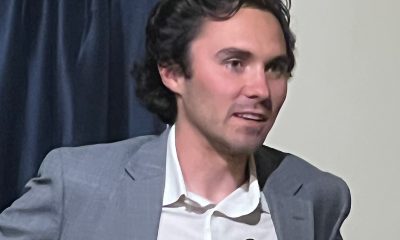
 Opinions1 day ago
Opinions1 day agoDavid Hogg’s arrogant, self-indulgent stunt
-

 District of Columbia21 hours ago
District of Columbia21 hours agoD.C. police seek help in identifying suspect in anti-gay threats case
-
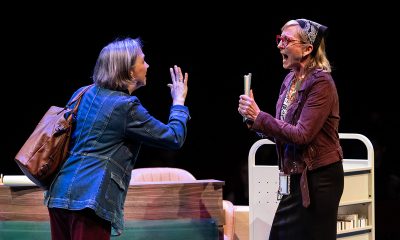
 Theater4 days ago
Theater4 days ago‘Bad Books’ a timely look at censorship in local library






